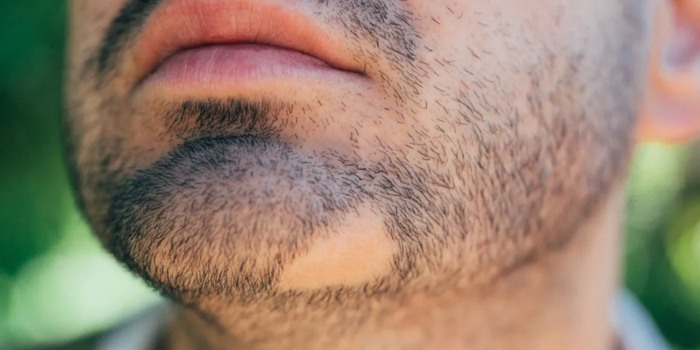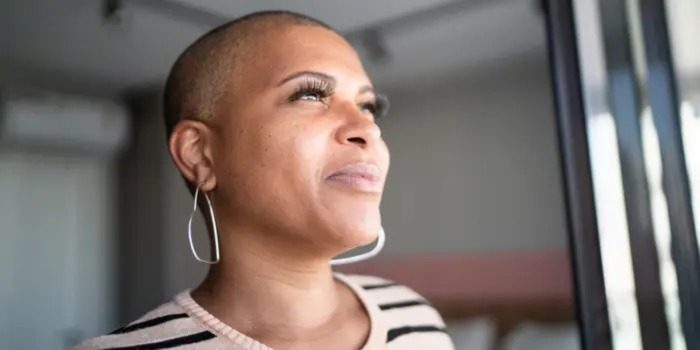5 Things to Know About Alopecia: Symptoms, Causes, Treatment
Nov 03, 2023 By Madison Evans
Having a hair fall is depressing, especially when it falls in patches. Many people in America are suffering from this situation, seeing their precious hair fall each day. There are five things to know about Alopecia that many people are unaware of. Most people hear the term Alopecia, which means hair fall. But to specify the patchy hair fall, its full name is Alopecia Areata.
According to a report, this scary disease is affecting 7 million people in the USA. However, scientists believe that it is a genetic disorder that can run in families. You can learn more about this genetic disorder, like symptoms, spread, causes, and treatment, here.

Things to Know About Alopecia
It is a skin disease that can happen in any part of the body. There are different types of this disease, like Alopecia Areata, Androgenic Alopecia, Traumatic Alopecia, etc. This disease developed with the immune system mistaken for healthy tissues as a danger.
They attack those cells of the hair follicle and result in patches. The following are the things that you must know about alopecia areata.
Alopecia Areata Symptoms
You'll start seeing symptoms at the age between 25-36 years old. The most common symptom is hair fall in the form of patches. This patchy hair fall begins mainly from the scalp. But the effect may have on any part of the body like lashes, beard, eyebrows, etc.
The disease may be old, but once you enter the age of symptoms, you'll start feeling itchy and burned. After a few days or weeks, you'll see that the itchy part has a patch with no hair. Among the people having Alopecia, 30% of individuals experience repetitive cycles of hair loss and regrowth.
Half of Alopecia patients are recorded to recover the symptoms within one year. However, 10% are those who develop the severe stage of this disorder in which the person has complete hair loss. This disease also includes the finger and toenails that undergo some following changes.
- Thin and split nails
- Pinpoint dents
- Nails lose their shine
- Rough nails
- White spots appear
Common symptoms of this disease include the following;
- Growth of gray or white hair on the patches
- Itching and burning
- Nail splitting
How To Stop Alopecia Areata From Spreading
There are equal chances of getting this disease in men and women. No matter which age, gender, ethnicity, or culture you live, you may have Alopecia Areata. However, most people experience this disorder in their teens, twenties, and thirties. The children who have this disorder are reported to be less than 10.
Besides, the higher risk of spreading it is in the same race. If someone in your family or relatives has Alopecia Areata, there are higher chances you may get affected. But many families don't have such a history. Scientists put effort into linking various genes with the disease to find out it is a genetic disorder.
Most of these genes are those responsible for the proper functioning of the immune system. Furthermore, people with other autoimmune diseases like thyroid disease, Psoriasis, or vitiligo are at greater risk of getting affected. Emotional stress can also cause Alopecia Areata in such persons, but in most cases, there is not a specific trigger.

Which Vitamin Deficiency Causes Hair Loss
It is an autoimmune disorder, which means it occurs when the immune system attacks the healthy cells in the body. It is not toxic but only attacks the hair follicles by mistaking them as pathogens. Most people who have this disorder are healthy and have no other skin issues.
As it is a genetic disorder, it runs in the family. However, here is the report that says 20% of people have this disorder from their family. There are no specific Alopecia causes that determine the occurrence of this disorder.
The experts don't know the exact cause, but here are some factors that determine the occurrence of this disorder.
- First is the genetic link with any of the family members.
- Certain health conditions also involve the onset of Alopecia Areata. These include vitiligo, thyroid, down syndrome, etc.
- There are some vitamins and annual deficiencies that also lead to having this autoimmune disease. These are vitamin D and B3, amino acids, zinc, biotin, iron, etc.
Can Alopecia Be Cured
The duration of having this disorder varies from person to person. Some may have patches of hair loss throughout their life, while others experience the cycles of hair fall and regrowth. There is no proper treatment for this disorder, but you have different options available to restore the hair fall.
You can visit a doctor who will look at your patches and hair loss for diagnosis. The diagnosis can be done in four ways.
- The first place is the entire test, in which the doctor will tug on your hair for the test. For the test, you don't have to wash your hair for 24 hours.
- The second test receives a biopsy in which the doctor will get two samples of your scar tissue for the test.
- The third is a trichogram method in which your healthcare will measure hair loss by looking under a microscope.
- The last way is the blood test to examine whether you have Alopecia disease or not.
Alopecia Treatment
After diagnosis, treatment will be done based on the reason for your disease. There may be a situation in which the follicles are not destroyed, and the hair can regrow there. Such patches can have a full recovery without any treatment.
There are treatments, surgery or medication options available based on your condition. These include steroids, estrogen, antibiotics, hair transplant surgery, spironolactone, etc. There are also some natural remedies you can try, like choosing a hairstyle that can cover up your patches, wear a wig, or fill up your eyebrows. Thus, if you are experiencing this disease, you can try any of these treatments after consulting your doctor.

Conclusion
This disease is challenging for the persons who face it and need treatments suitable for them. There are many things to know about Alopecia if you don't know much about it. We explained each thing in detail to help you have a clear understanding of this disease.







